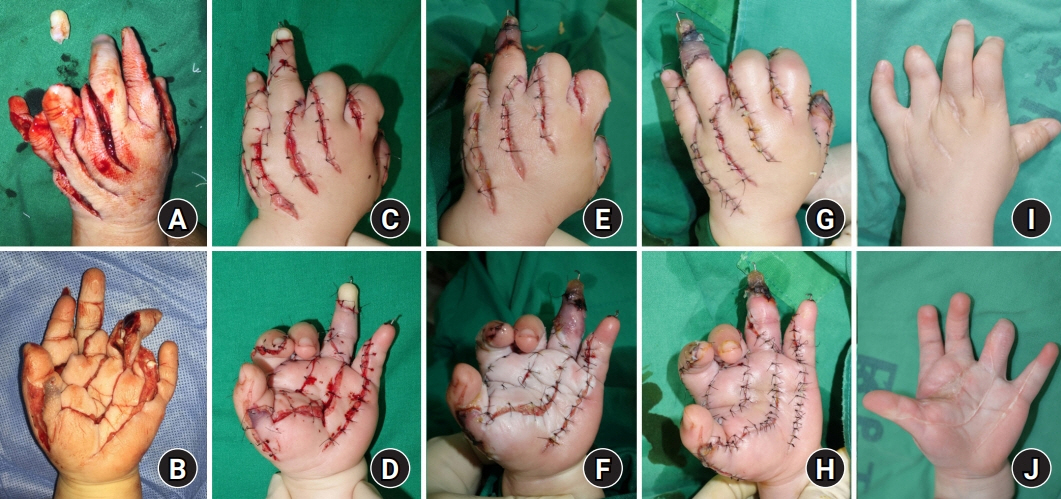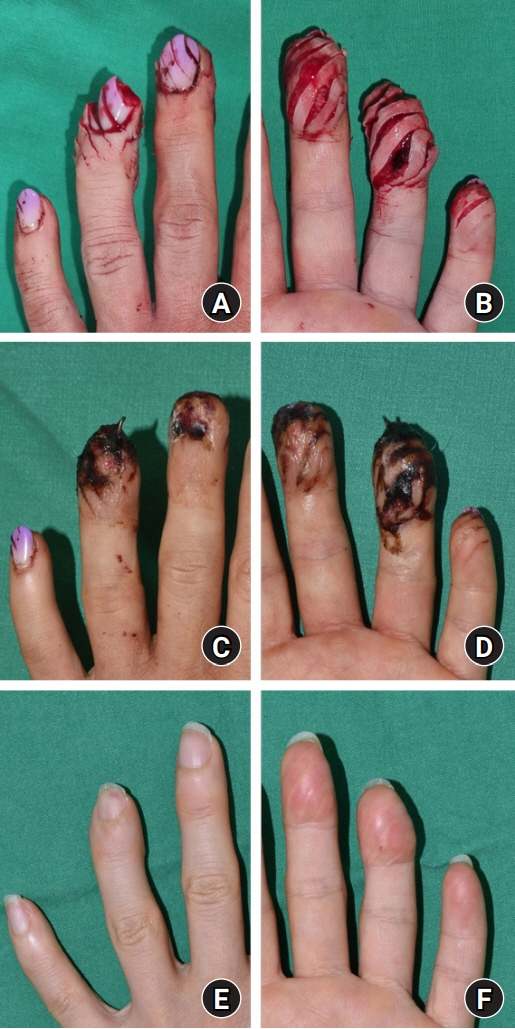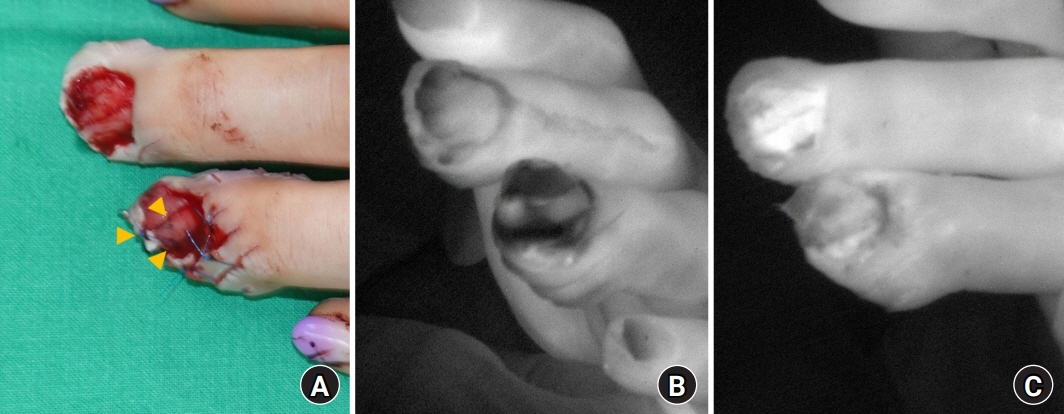Arch Hand Microsurg.
2022 Sep;27(3):229-233. 10.12790/ahm.22.0022.
Postoperative edema management with external compression for successful treatment of shredder injuries of the hand: a report of two cases
- Affiliations
-
- 1Department of Plastic and Reconstructive Surgery, College of Medicine, The Catholic University of Korea, Seoul, Korea
- KMID: 2532739
- DOI: http://doi.org/10.12790/ahm.22.0022
Abstract
- Shredder injuries have a poor prognosis and are a problematic type of hand trauma. The authors describe the successful management of two cases of shredder injuries, one involving a child and the other involving an adult. In the child, the authors performed loose skin sutures for closure in the initial surgery and adjusted the degree of intensity of the external compression daily. According to the degree of tissue swelling, the skin sutures were gradually tightened. In the adult, the authors used external compression rather than sutures and adjusted the degree of intensity every day. When treating a shredder injury, the most crucial task is balancing perfusion and tissue pressure to reduce edema while preserving viability, thereby healing and restoring the original function and shape of the injured body part. This paper suggests that external compression may be an important postoperative edema management method in patients with hand shredder injuries.
Figure
Reference
-
References
1. Brandner M, Bunkis J, Trengove-Jones G. Meat grinder injuries to the upper extremity. Ann Plast Surg. 1985; 14:454–7.2. Warren RC, Foltin GL. Toddlers at risk for paper shredder injury in the home: easy access and severe injury. Pediatrics. 2006; 117:535–8.3. Kim HW, Oh JR. Hyperbaric oxygen therapy and prostaglandin usage for shred injury of the fingers: a case report. Arch Hand Microsurg. 2022; 27:54–61.4. Behnke AR, Forbes HS, Motley EP. Circulatory and visual effects of oxygen at 3 atmospheres pressure. Am J Physiol-Leg Content. 1935; 114:436–42.5. Miller LK, Jerosch-Herold C, Shepstone L. Effectiveness of edema management techniques for subacute hand edema: a systematic review. J Hand Ther. 2017; 30:432–46.6. Howard SB, Krishnagiri S. The use of manual edema mobilization for the reduction of persistent edema in the upper limb. J Hand Ther. 2001; 14:291–301.7. Fanali G, di Masi A, Trezza V, Marino M, Fasano M, Ascenzi P. Human serum albumin: from bench to bedside. Mol Aspects Med. 2012; 33:209–90.8. Villeco JP. Edema: a silent but important factor. J Hand Ther. 2012; 25:153–62.9. Gurtner GC, Jones GE, Neligan PC, et al. Intraoperative laser angiography using the SPY system: review of the literature and recommendations for use. Ann Surg Innov Res. 2013; 7:1.
- Full Text Links
- Actions
-
Cited
- CITED
-
- Close
- Share
- Similar articles
-
- A Clinical Observation on Injuries of External Genitalia
- Treatment of Infected Nonunion of the Femur with Marked Shortening by Compression and Gradual Distraction at the Nonunion Site: A Report of 2 cases
- Pyogenic Arthritis of the Metacarpophalangeal Joint Treated with External Fixation in Adolescent
- Effects of a Modified Hand Compression Bandage for Treatment of Post-Burn Hand Edemas
- Treatment of Peripheral Artery Pseudoaneurysm: Three Case Reports




